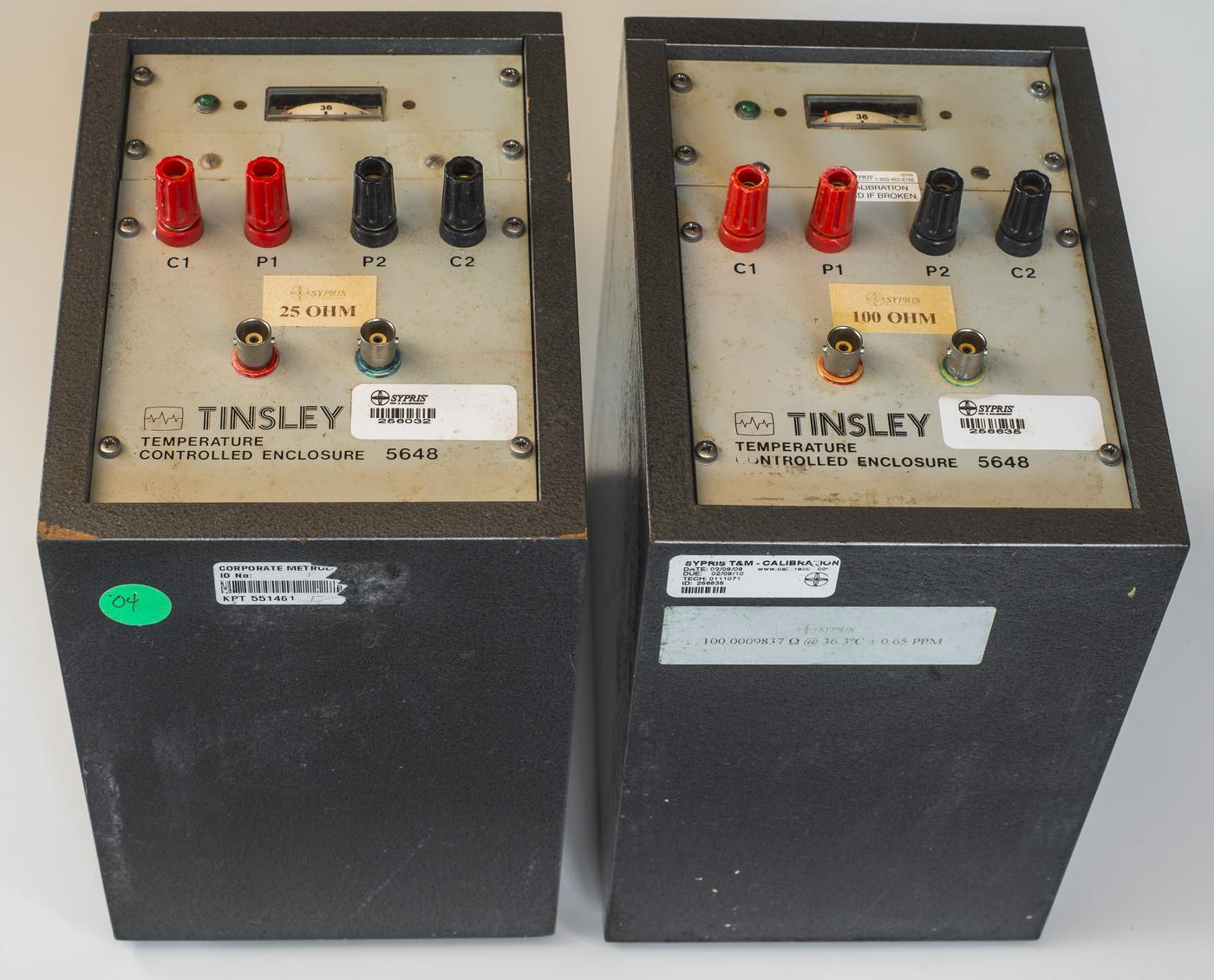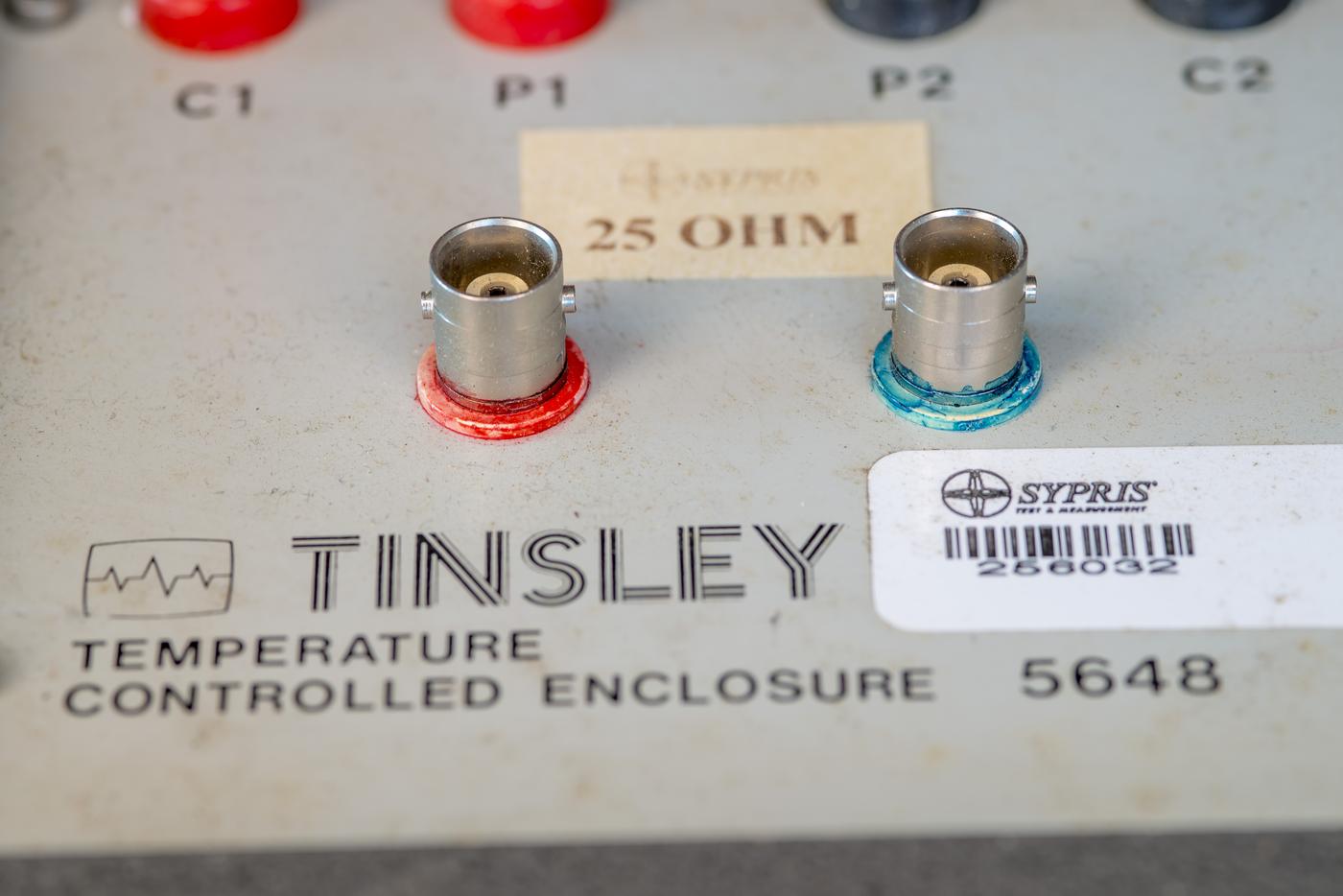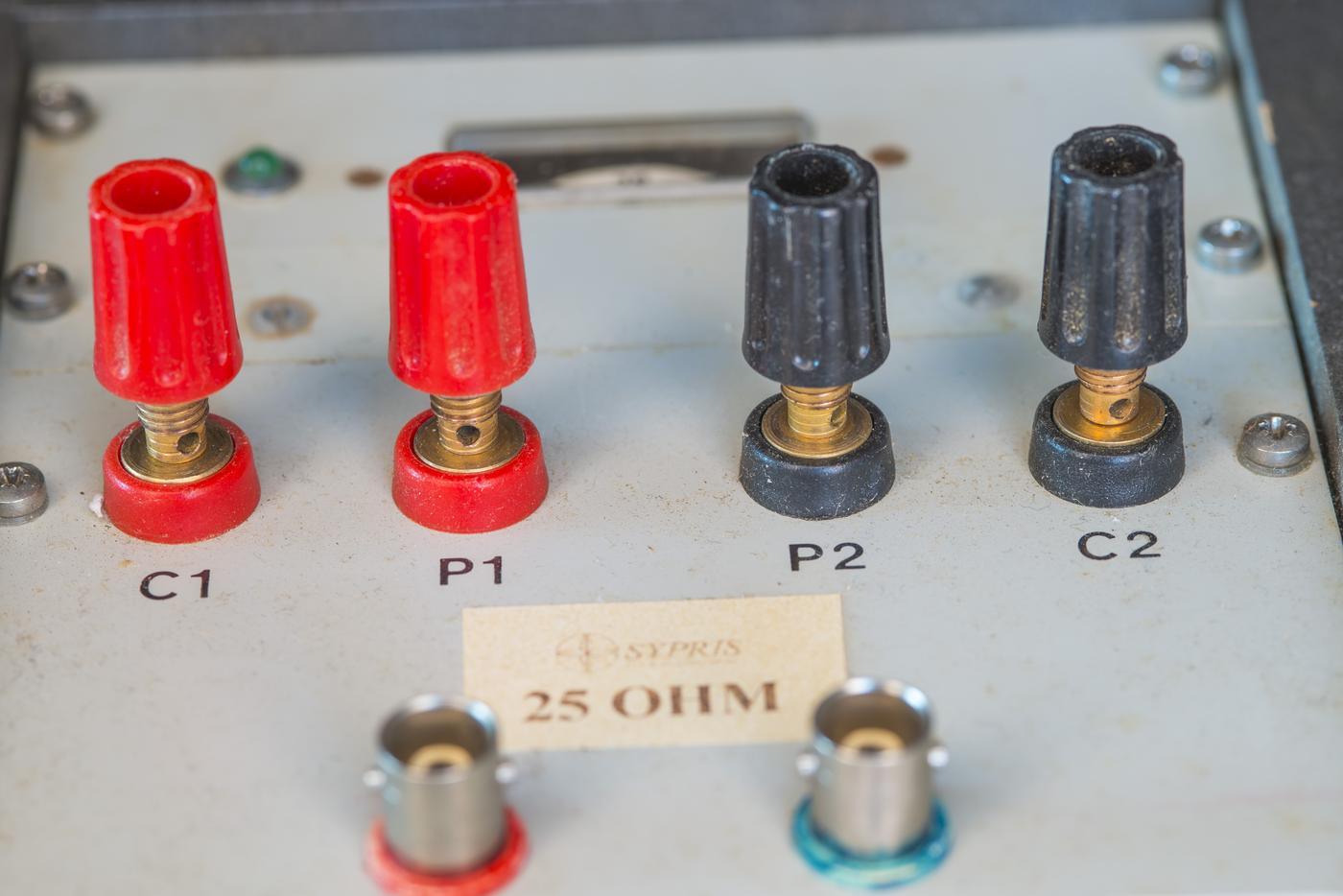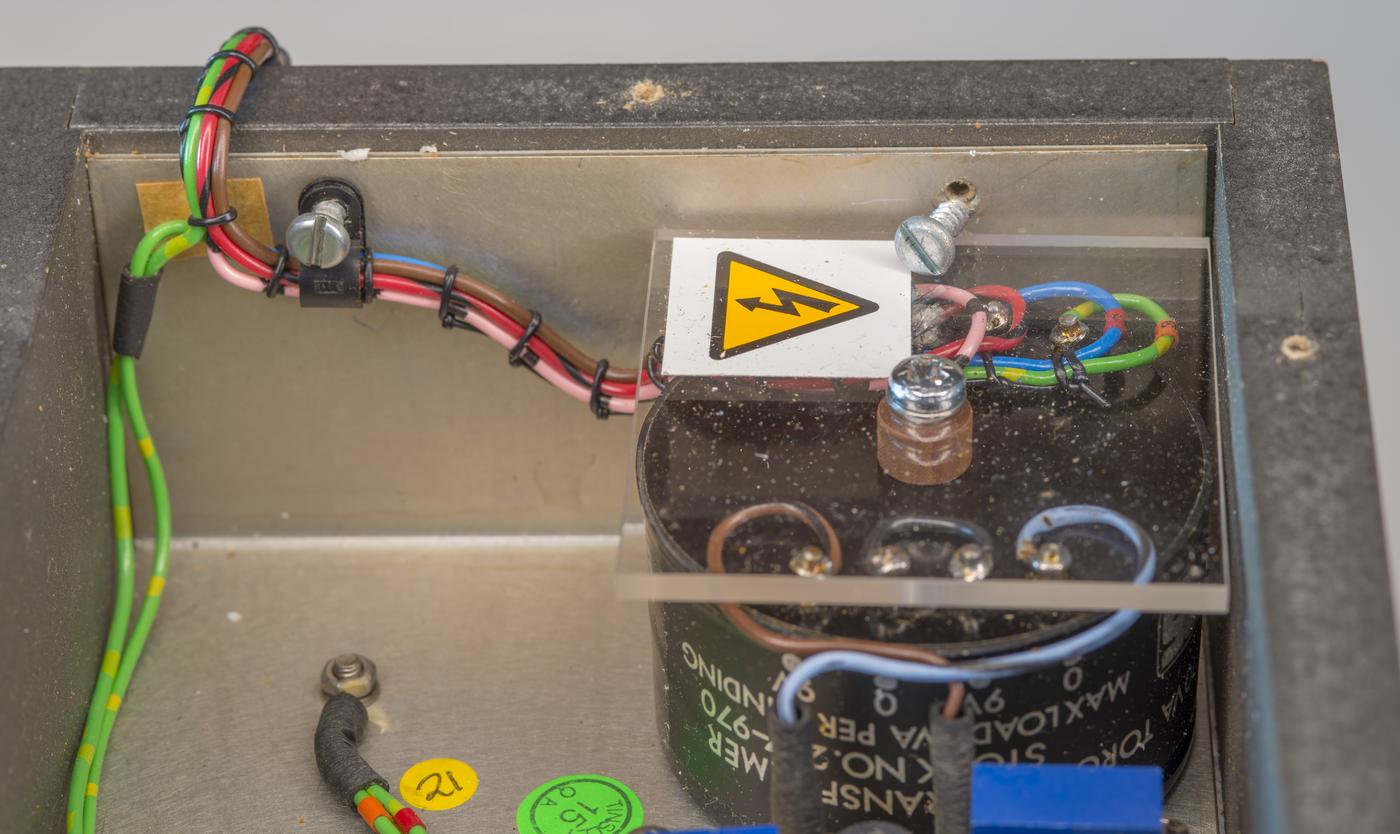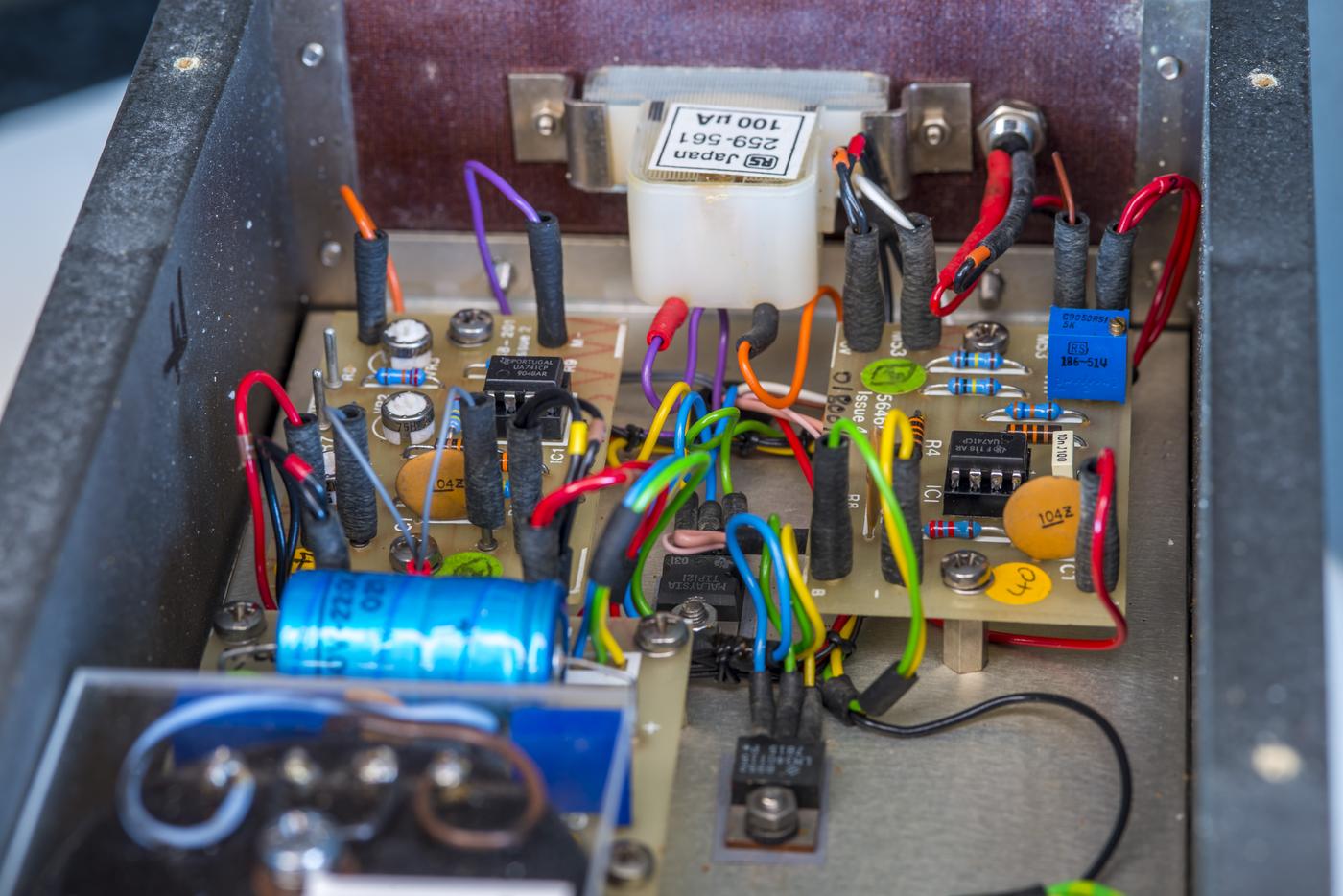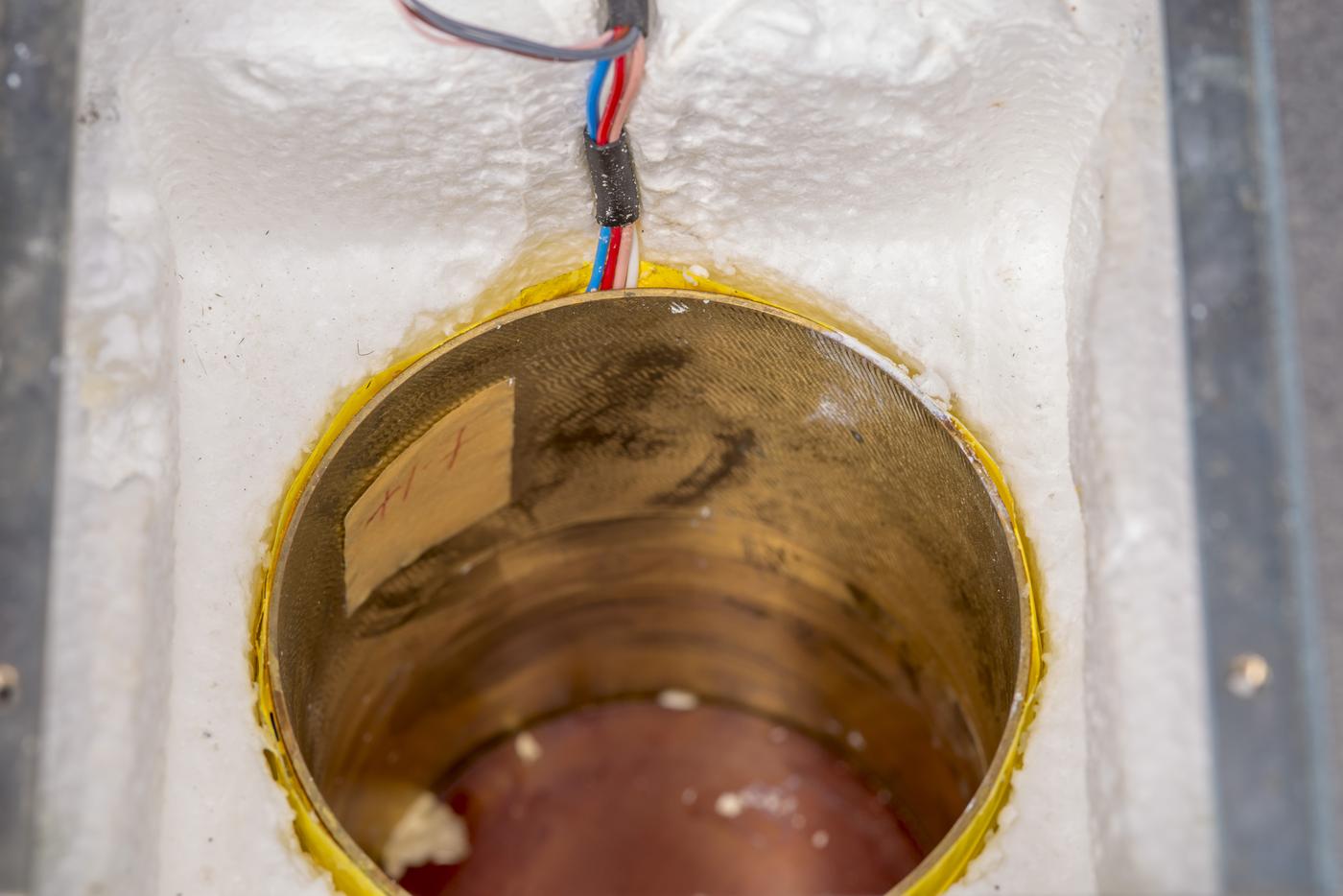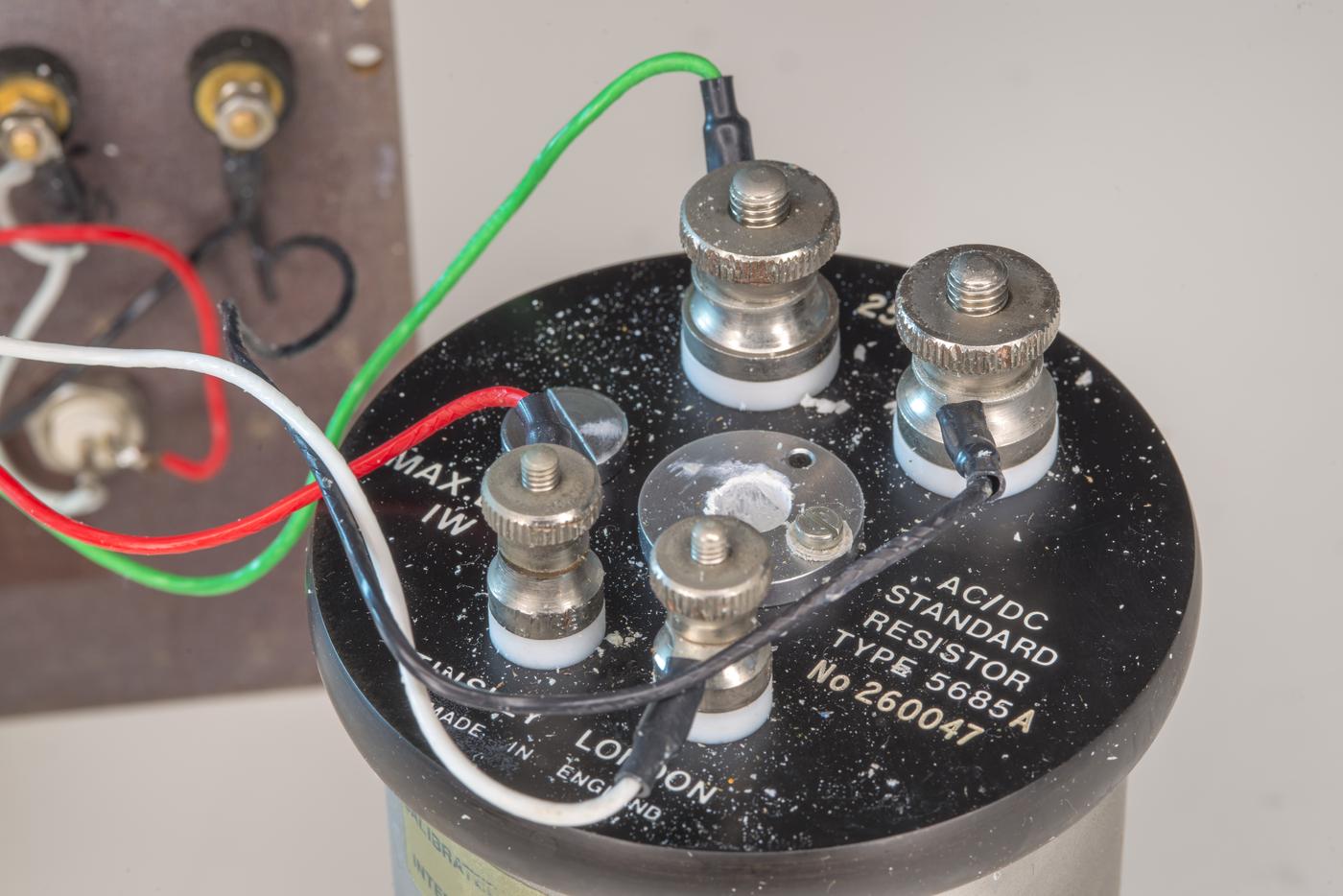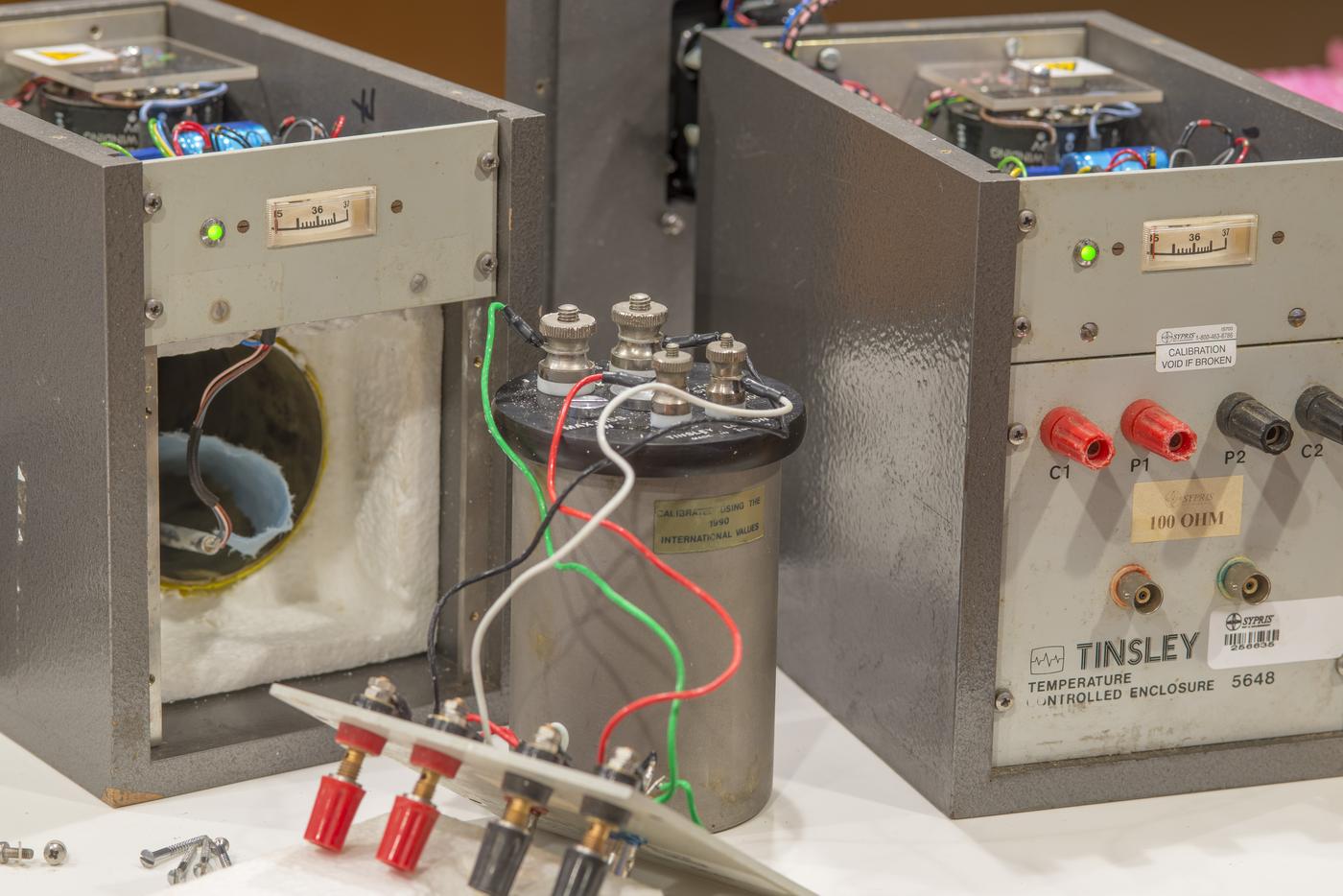Tinsley is old and well-known manufacturer for high stability metrology resistance standards and test equipment. Founded in 1904 by Henry Tinsley the company today is internationally recognized as one of the instruments manufacturers, supplying instrumentation and standards to National Standards Laboratories and industry worldwide.
Tinsley 5648 oven enclosure units teardown
Sadly there is no manual or much information available online about this Tinsley 5648 oven enclosure. Hopefully this teardown will resolve the issue now. Tinsley oven box Model 5648 is designed to be compact and self-contained with power supply, electronics circuitry and heating chamber built into a compact wooden box. It is designed to be operated with terminals pointing straight up and mains power connection at the back. It’s a little bit weird in orientation and proportions, but not uncommon for English-made instrumentation :).
There are large rubber bumpers on the bottom side of the unit. A nice touch to protect the box and other surfaces from scratching up. There is no battery power backup in the 5648 enclosure, but with good insulation and the relatively large mass of the resistance standard itself, it might maintain temperature for some short duration, enough to move the standard between different rooms.
Interesting to note that these Tinsley units were supplied by ASL Inc. who is today part of WIKA. WIKA and Tinsley have a partnership to distribute and sell resistance standard products in different markets.
Because core 5685A resistor is designed to operate with AC/DC good performance, the oven enclosure panel also has additional BNC connectors to provide coaxial interface for easier interfacing with AC thermometry bridge systems. This simplifies user operation and connections by avoiding adapters between banana posts and coaxial cables. BNC insulators are painted in red and turquoise colors with a sharpie :).
Posts are rather crusty and dirty and definitely require some decent amount of cleaning. Knobs are not removable from the turret but allow quite a bit of spade lug spacing, enabling connections with multiple cables. The panel that has the posts and BNC cables is made out of fiberglass dielectric similar to Bakelite material and not conductive. Based on the chip date code this unit was made around week 48 year 1990.
A small toroidal transformer is used to convert mains 120 V AC input to 20 V AC which is further rectified and regulated to +15 V DC level. Transformer exposed contacts are protected from contact by bolted on clear polycarbonate sheet.
Wiring is done with multi-stranded copper tinned conductor cables. No magical special PTFE cables or silver oxygen free interconnects. Part of the reasoning is the target applications of 5648 box for thermometry, where the most commonly needed standard values are 25 Ω and 100 Ω. With such low resistances, leakage effects can be neglected even for high precision long resolution measurements.
Heater coil is wrapped around 1 mm thick brass cylinder that is loosely matching T5685A resistance standard body. There is no direct thermal coupling interface between resistor body and the heated cylinder. Adding a thermal paste or similar thermal transfer compound could help with thermal transfer but is not really friendly for the ability to swap resistors from the enclosure without getting into messy cleaning and grease application.
Insulation around heated cylinder with resistance standard is usually closed cell Styrofoam with a square lid on top covering connector and formed box around heater unit. There is fiberglass pad on the bottom of the heater cylinder. Interesting to note the four wires going into the heater element, perhaps they use two separate heaters internally? I have not disassembled the unit any further as it’s still a functional device.
Controller uses a simple resistive bridge with thermistor element used in one of the arms as a sensor. Operational amplifier uP741 then compare difference between the fixed adjustable resistance network arm and arm with thermistor to determine the error signal for the heater drive. It’s purely analog circuit with a small 10 nF film capacitor in the feedback loop to avoid possible fast oscillations close to thermal equilibrium. Otherwise there’s not much else to the circuit here.
Overall it’s pretty simple cost-effective solution to the temperature coefficient problem that many of the older resistance standards designed for oil-bath use have and also eliminates the need for a separate precision air-bath or messy oil-bath to maintain stable resistance standards for thermometry laboratories.
It will be interesting to measure the actual performance of this oven and temperature control in the future once we get back to rechecking these Tinsley standards for a new recalibration cycle.
Conclusion
More details about Tinsley standards and details of this oven box, including a reverse engineered schematics are available in dedicated article here .
Discussion is very welcome thru comment section or at our own IRC chat server: irc.xdevs.com (port 6010, channel: #xDevs.com).
Projects like this are born from passion and a desire to share how things work. Education is the foundation of a healthy society - especially important in today's volatile world. xDevs began as a personal project notepad in Kherson, Ukraine back in 2008 and has grown with support of passionate readers just like you. There are no (and never will be) any ads, sponsors or shareholders behind xDevs.com, just a commitment to inspire and help learning. If you are in a position to help others like us, please consider supporting xDevs.com’s home-country Ukraine in its defense of freedom to speak, freedom to live in peace and freedom to choose their way. You can use official site to support Ukraine – United24 or Help99. Every cent counts.
Modified: March 21, 2024, 2:18 a.m.

